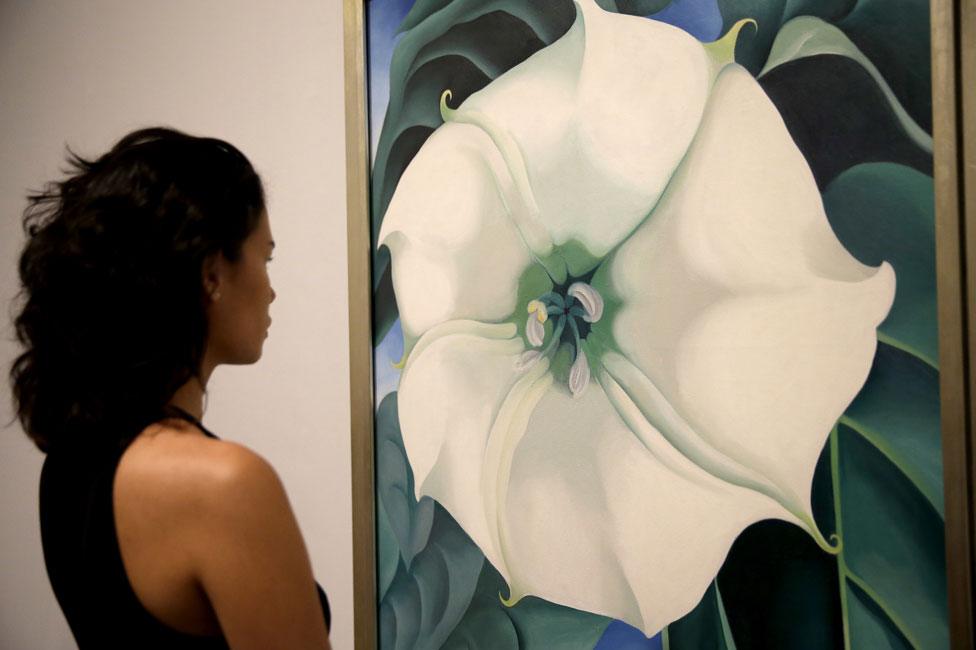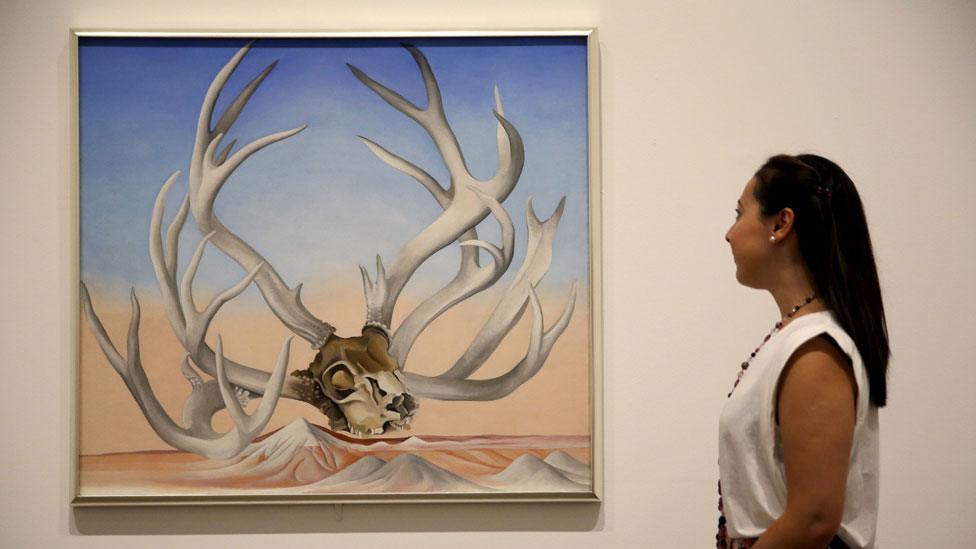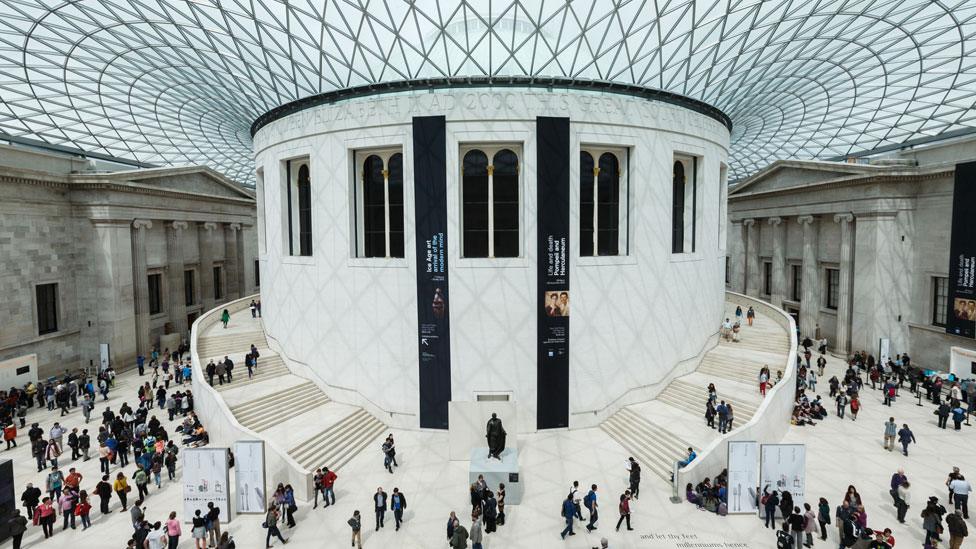Georgia O'Keefe: Beacon of beauty and range
- Published

Georgia O'Keefe's trademark voluptuous flower paintings were originally interpreted by some as allusions to female genitalia
In or around 1917 the notion that art should be beautiful was deemed passe. Marcel Duchamp had brought his homespun and highly persuasive cod French philosophy to Manhattan and declared that art should henceforth be "anti-retinal". He made his point with a "readymade" urinal.
The idea caught on and prevails to this day in the shape of unmade beds and rotting cows' heads. But not all artists swallowed Duchamp's ugly Parisian pill.
There were those, like the young Georgia O'Keeffe, who stuck two elegant fingers up to the Frenchman's proclamations and refused to turn a blind eye to the beautiful.
While Duchamp was cheekily sketching a goatee onto a postcard of the Mona Lisa, O'Keeffe was investing her very considerable painterly powers on producing voluptuous, colourful images of flowers in bloom.
The Frenchman and his gang of irony-loving cronies, which included O'Keeffe's future husband and champion, Alfred Stieglitz, giggled like schoolboys when her lush, sensuous paintings were exhibited.

In displaying Georgia O'Keefe's extensive range of work Tate Modern hopes to show her versatility and superiority over her male contemporaries
They debased her depictions of nature's wonder by interpreting her paintings as saucy allusions to female genitalia.
She was having none of it, and told them so. But that didn't stop them peddling their line, which then became an established and accepted reading of her work - even though she always explicitly refuted such claims.
Now, 30 years after her death, the curators of a major monographic exhibition of her work at Tate Modern, aim to put the record straight on her behalf.
In fact, they want to go further than that; they want to reposition O'Keeffe as not simply the equal of her male contemporaries, but their better.
The way in which they have chosen to mount their argument is to show all sides to O'Keeffe's fairly extensive output, and not simply to focus on her crowd-pleasing flower pictures.
The show starts with her pioneering abstract charcoal drawings that originally brought her to the attention of the aforementioned Stieglitz.

Georgia O'Keefe took great note of Kandinsky and his art-music influences are apparent
Although these are some of her earliest works, made while she was in the process of becoming an art teacher in Texas (a career choice she abandoned once Stieglitz offered her a 12-month stipend if she moved to New York), they are some of her most powerful and interesting.
You can see a mind being made up, decisions being taken, a course plotted. O'Keefe took great note of Kandinsky and his art-music influences are apparent, but they have a singularity and individuality that have genuine wall power.
Stieglitz was far from perfect, but he was a great photographer with a brilliant eye. He saw these drawings and immediately knew O'Keeffe was special. You will, too.
Soon, she is painting New York, in part as a reaction to the porno remarks Stieglitz et al were making about her flower paintings. Her take on this hitherto "male" subject - the industrial landscape - is partially but not wholly successful.
Her handling of paint and tone is rhythmic and assured, but the two paintings featuring the Hudson River don't quite ring true. Maybe, that's because she didn't really believe in the subject at a time when she and all her contemporaries were attempting to paint, write, or photograph the Great American Thing.

Georgia O'Keefe's focus moved to work depicting the arid surroundings of the sun-bleached outback of America
She left New York for the West and found her way in its epic landscape.
This was the soul of the America - the dust and the distance made sense of the bright lights and high-rises of the metropolis. Scale, loneliness, pattern, and poetry were woven into stark reality of her Wild West. She became a Frontierswoman.
The paintings she subsequently produced in the sun-bleached outback of America are as surprising as they are ambitious. Flowers were a rare commodity in this new environment, but skulls were not. She swapped life for death, and made surreal images featuring white animal bones set against a vast pink-blue background.
The extreme close-up technique of her early work with flora had morphed into something entirely different, she had changed in a way that those who know her only as a flower power artist might not realise. And that is the revelation of this show. Georgia O'Keeffe was a painter of the Sublime.
Georgia O'Keefe is on at Tate Modern from 8 July to 30 October.
- Published29 September 2015

- Published8 April 2015
